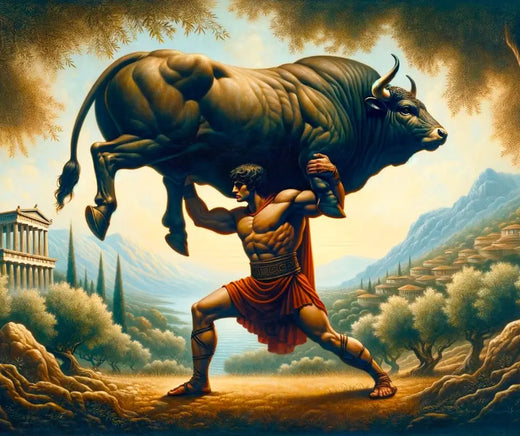Shin splints, formally known as medial tibial stress syndrome, are a prevalent and challenging issue for runners at all levels, from sprinters to marathon enthusiasts. They represent one of the most common injuries within the running community. Recent scientific insights, however, have shed light on effective methods to both prevent and manage shin pain through targeted muscle strengthening—specifically,the calf muscles and the tibialis anterior.

The Impact of Running on the Tibia
The tibia, or shinbone, bears the brunt of shock during running, making it vulnerable to injuries ranging from minor shin splints to severe tibial stress fractures. Research by Maarten Moen and his team in the Netherlands revealed that both conditions stem from the same issue: the bending of the tibia under running stress (1). The tibia doesn't bend dramatically but behaves more like a stressed bridge, bending slightly backwards when the foot strikes the ground. This bending is influenced by the bone's thickness and the support it receives from surrounding muscles, notably the calf and tibilias muscles.
Bone Adaptation from High-Impact Activities
Contrary to the notion that running primarily increases the risk of injury, engaging in high-impact activities like running and jumping actually promotes the development of stronger, denser bones. A pivotal 2009 study by Kristen Popp at the University of Minnesota used CT scans to demonstrate that runners who had never suffered stress fractures exhibited significantly larger bones and muscles than those who had experienced such injuries (2). This suggests that the tibia adapts to the size and strength of surrounding muscles, particularly the calves, which are the largest muscle group around the tibia.

Calf Muscles as Structural Support
Enhancing the resistance of the shinbone to bending forces, the calf muscles play a pivotal role akin to the powerful cables on a suspension bridge. When these muscles engage during the impact of a foot strike, they counteract the forces that threaten to bend and strain the tibia. This biomechanical support suggests that runners with stronger calf muscles are less susceptible to shin injuries.
This theory was rigorously examined in a compelling 2007 study led by Luke Madeley, Shannon Munteanu, and Daniel Bonanno at La Trobe University in Australia. Mirroring earlier research by Kristen Popp, this study contrasted two distinct groups of runners: those suffering from shin splints and those free from such afflictions.
Participants were tasked with performing as many consecutive single-leg calf raises as they could, under strict supervision to prevent any form of cheating, such as dipping too low or leaning excessively.
The results were striking. Runners who had experienced shin splints managed an average of only 23 calf raises, whereas their injury-free counterparts completed an average of 33. This significant 30% difference not only supported the hypothesis but also underscored the critical role of calf strength in protecting against shin injuries.
However, we can’t just focus on one muscle group because that can lead to imbalances. So it is essential that we strengthen the front side of the leg as well.
Understanding Tib Raises And Its Impact
The tibialis anterior muscle, located in the front of the shin, plays a pivotal role in the movement of the foot and the stability of the shin during running and other activities. Loaded tibialis raises, performed with a tib bar, specifically target this muscle. By adding weight, this exercise not only strengthens the muscle but also puts controlled stress on the tibia, encouraging positive adaptive responses in the bone itself.
Similar to how weightlifting increases bone mineral density in the arms, legs, and spine, loaded anterior tibialis raises enhance the bone density of the tibia. This exercise stimulates the bone remodeling process, where the bone tissue is gradually replaced with new, stronger tissue. Over time, this process increases the overall density and thickness of the tibia, making it more resilient to the stresses of high-impact activities.

Implementing Calf and Tib Raises
To proactively combat shin splints, I recommend doing the following superset 1-3 times per week. A superset is where you perform both exercises back to back without rest. I love supersetting these two movements because they are polar opposites, meaning one muscle is resting while the other one is working. Plus, it saves you a ton of time, so let’s jump in:
ProtocolPerform 2-3 sets by 15-25 reps and go to failure on your last set.
- Once you can do 25 reps in a row for all 3 sets, add weight or perform single leg calf raises.
- Once you can do 20 reps in a row for all 3 sets, gradually increase your weight by 5 pounds each week.
Conclusion
Incorporating specific exercises like calf raises and floating tib bar raises are not merely reactive measures but crucial preventive strategies that safeguard against shin splints. These exercises significantly enhance the strength and resilience of the shin bone over time by increasing bone mineral density and muscle mass.
By regularly performing these exercises, runners can enjoy a healthier, more active lifestyle free from the limitations of shin pain, backed by the support of robust scientific research. If you are in need of a plan, than check out our New Year Health Bundle. It comes with everything you need to get rid of shin splints and knee pain.
Citations
1. Moen MH, Tol JL, Weir A, Steunebrink M, De Winter TC. Medial tibial stress syndrome: a critical review. Sports Med. 2009;39(7):523-46. doi: 10.2165/00007256-200939070-00002. PMID: 19530750.
2. Popp KL, Hughes JM, Smock AJ, Novotny SA, Stovitz SD, Koehler SM, Petit MA. Bone geometry, strength, and muscle size in runners with a history of stress fracture. Med Sci Sports Exerc. 2009 Dec;41(12):2145-50. doi: 10.1249/MSS.0b013e3181a9e772. PMID: 19915505.






Leave a comment
This site is protected by hCaptcha and the hCaptcha Privacy Policy and Terms of Service apply.